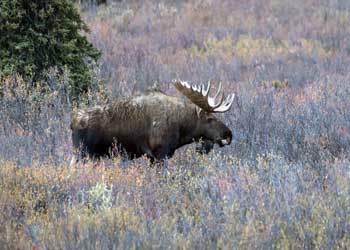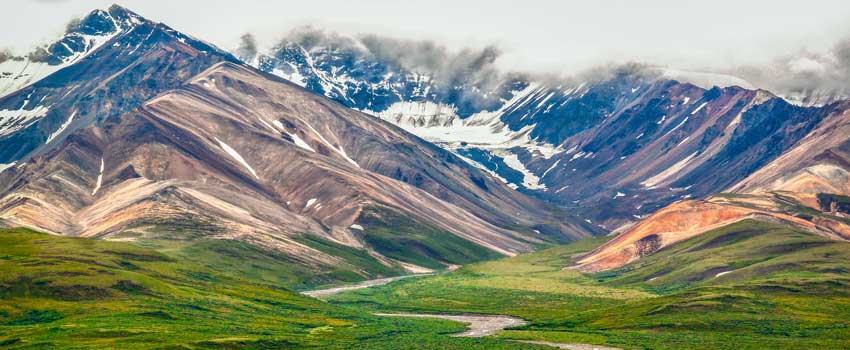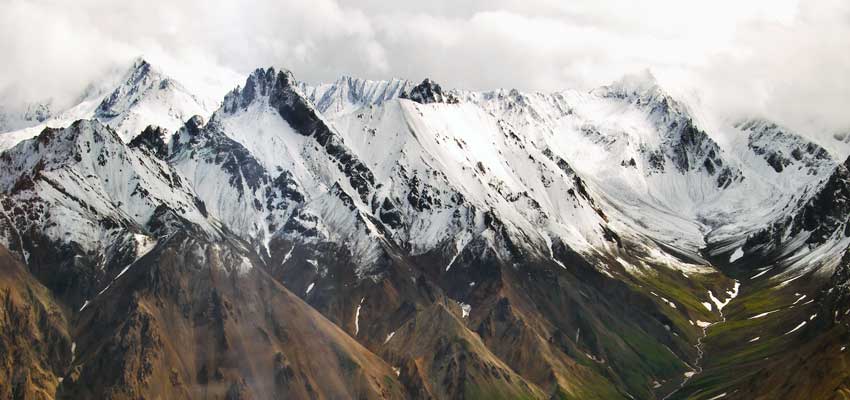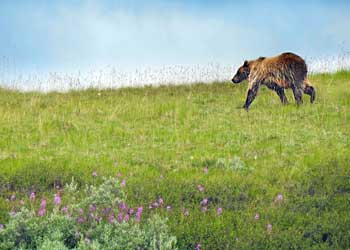Table of Contents
- 1 Denali Skiing Map and Location
- 2 Time to Reach Denali
- 3 Denali Base Camp Amenities
- 4 Denali National Park and Preserve Overview
- 5 Denali Mountain the Highest Peak of Alaska
- 6 Follow the park rules and regulations
- 7 Denali Skiing Resorts and Accommodations
- 8 Precautions and Restrictions for Skiing Denali
- 8.1 Terrain, Weather, and Hazards Assessment
- 8.2 Itinerary Development and Communication
- 8.3 Experienced Guides and Training Before Skiing Denali
- 8.4 Weather Monitoring and Gear Preparation for Skiing Denali
- 8.5 Gear and Equipment for Skiing Denali
- 8.6 Avalanche Awareness: Navigating the Risks of Denali’s Slopes
- 8.7 Wildlife Precautions: Coexisting with Denali’s Diverse Fauna
- 8.8 Leave No Trace Principles: Minimizing Environmental Impact
- 8.9 Communication and Emergency Preparedness: Staying Connected in the Wilderness
- 8.10 Backcountry Permits and Regulations: Navigating Administrative Requirements
- 8.11 Physical Fitness: Building Strength and Endurance for Denali’s Challenges
- 8.12 Route Restrictions: Responsible Navigation in Denali’s Wilderness
- 8.13 Emergency Response Plan: Safeguarding Well-being in Unpredictable Terrain
- 8.14 Mutual Consensus
- 9 Denali Skiing Video for Skiing Lovers
- 10 FAQs About Denali Skiing
Do you want to conquer the highest peak of Denali? How can you stay there? What you should have before skiing Denali? How to enjoy in Denali national park? If your answer is yes, then keep reading this article without escaping. We will explore everything in detail for your thrilling experience in Denali skiing.
The term “Skiing Denali” usually describes skiing on or around North America’s tallest peak, Denali. Alaska’s Denali National Park and Preserve, situated in the Alaska Range, is home to Denali. Adventurers looking for the ultimate test of endurance and ability are drawn to Denali because it’s a demanding and exciting undertaking. Situated at a height of 20,310 feet (6,194 meters) above sea level, Denali is a spectacular mountain range in the center of the Alaska Range.
This article examines the exceptional experience in skiing Denali, covering everything from its breathtaking location and features to the planning, amenities, and logistics needed for a successful expedition. Here are some essential details for Denali skiing:
Denali Skiing Map and Location
Alaska, USA’s Denali is located inside Denali National Park and Preserve. With more than six million acres of unspoiled wilderness, the park provides skiers with an incredible background. Situated roughly 240 miles north of Anchorage, the summit is encircled by glaciers, rough terrain, and an environment that requires preparation and respect. Denali’s status as a challenging skiing Denali location is largely due to its distinctive features:
Elevation and Terrain:
The steep slopes and towering height of Denali pose a daunting task to skiers during skiing Denali. With its glaciers, icefalls, and crevasses, the terrain is difficult and requires advanced climbing and skiing skills.
Weather Conditions:
Denali is renowned for its severe and erratic weather. Skiers have to deal with bitter cold, strong gusts, and abrupt weather shifts. It is imperative to wear clothing and equipment appropriate for chilly climates.
Remote Wilderness:
It takes navigation across an isolated and pristine terrain to reach Denali. Skiers frequently arrive at Ted Stevens Anchorage International Airport, where they board smaller aircraft to Talkeetna, Denali’s closest settlement. Air services then offer transportation to the mountain’s base camps.
Time to Reach Denali
Travel to Alaska: Usually, skiers take a plane to Ted Stevens Anchorage International Airport to begin their adventure. They next move on to Talkeetna, which serves as an important staging area for trips to Denali.
Flight to Base Camps: Talkeetna air services offer flights to Denali base camps. Both the ascent and the descent begin at these base camps.
Denali Base Camp Amenities
Before setting out on a skiing Denali excursion, one must comprehend the fundamental assistance that base camps offer. These camps are vital gathering places with basic facilities that are necessary for skiers venturing into the difficult terrain. Base camp facilities’ main features are as follows:
Essential Products: Tents for shelter Basic tent shelter is what base camps offer as a safeguard against the erratic weather in Denali. Although these accommodations are basic, skiers should be aware of how basic such shelter is by nature.
Food Services: Base camps provide food and fuel to skiers who are making the difficult trek. It’s important to remember that the provisions are modest and that skiers are expected to carry additional food for the remainder of their adventure.
Communication Facilities: Base camps provide limited communication facilities so that people may stay in touch with the outside world and make sure that everyone in the skiing group is coordinating effectively. Skiers should prepare ahead and provide for basic communication resources.
Self-Sufficiency Requirement: Skiers need to adopt a self-sufficient mindset for the majority of their route, even though base camps offer necessary amenities. This entails bringing personal supplies, making sure gear works, and being ready for the difficulties presented by Denali’s harsh and isolated climate.
More than individual skill is needed to meet the complex obstacles presented by Denali’s topography. Skiers frequently put together expedition teams and hire seasoned guides, who provide a wealth of information and expertise unique to skiing Denali. Experienced advisers are important in a number of crucial ways.
Essential Assistance: Navigational expertise is necessary due to Denali’s large and complex terrain. Skiers are guaranteed to navigate the terrain safely and effectively by knowledgeable guides who are well-versed in the terrain of the area.
Safety Assurance: The guides are essential to the skiing party’s safety. Their ability to identify hazards, carry out safety procedures, and make wise choices in difficult circumstances makes a big difference in the team’s overall health.
Logistical Coordination: Skiers can concentrate on the actual skiing experience while knowledgeable guides simplify the excursion by handling equipment management, route planning, and logistical coordination.
Environmental Awareness: Denali’s distinct environmental problems, like as weather patterns, possible risks, and wildlife interactions, are well-known to guides. Making decisions is aided by this knowledge, which also improves the entire expedition experience.
Denali National Park and Preserve Overview
The interior of Alaska is home to Denali National Park and Preserve, a huge and pristine wilderness area known for its breathtaking vistas, varied animals, and the iconic presence of Denali, North America’s tallest peak. The following provides a thorough overview of Denali National Park:
Location: Spanning more than six million acres, Denali National Park is located in the heart of the Alaska Range. The largest city in Alaska, Anchorage, is around 240 miles north of the park.
Denali Mountain the Highest Peak of Alaska
Rising to a height of 20,310 feet (6,194 meters) above sea level, Denali, formerly known as Mount McKinley, is the focal point of the park. Climbers are drawn to Denali, the highest peak in North America and one of the Seven Summits.
Terrain and Landscapes: Denali National Park features a wide variety of landscapes, such as glaciers, taiga woods, tundra, and rough rocky terrain. Large tracts of undeveloped land that serve as a home to numerous plant and animal species define the park.
Animal Life: With so many different creatures to see in their native environments, the park is a wildlife enthusiast’s paradise. Grizzly bears, moose, caribou, Dall sheep, wolves, and numerous bird species are among the animals that are frequently sighted. In addition, the park supports smaller mammals and offers migrating birds a vital habitat.
Denali National Park Road
The main route for visitors is the Denali Park Road, which stretches for about 92 kilometers into the center of the park. The first fifteen miles are open to private automobiles; after that, only park buses are permitted entry. The road offers opportunities for wildlife viewing as well as breath-taking vistas of the surrounding countryside.
Tourist Information Centers: Visitor facilities at Denali National area provide educational displays, ranger activities, and details on the environmental and cultural history of the area. A good place to start for information and orientation is the Denali Visitor Center, which is close to the park entrance.
Backcountry and Wilderness: A sizable section of the park is set aside for wilderness, offering backpacking and backcountry exploring options. Those who want a more secluded and immersed experience can apply for backcountry camping permits.
8. Cultural Legacies: The park is significant historically and culturally as well, since there is proof of human habitation going back thousands of years. The park’s natural and cultural values are safeguarded through the management of its resources.
Climate and Weather of Denali National Park
Denali National Park experiences a broad range of temperatures year-round, making for difficult weather conditions. Winters are bitterly cold, and summers are brief and range in temperature from mild to cool. It is advisable for visitors to be ready for unforeseen weather conditions, such as heavy rain, snow, and wind.
10. Conservation and Preservation: The unique ecosystems of Denali National Park and Preserve are committed to being conserved and preserved. To preserve the park’s natural beauty, efforts are taken to reduce human impact, and guests are urged to follow the Leave No Trace philosophy.
Follow the park rules and regulations
Comply with park laws and regulations: Skiing in Denali is governed by laws and regulations that are designed to protect both the natural and cultural resources of the park and the safety and enjoyment of visitors. The following rules should be followed when skiing in Denali:
You need a backcountry permit if you plan to ski farther than the park road or spend the night in the park. You can get a free permit at the winter tourist center or online. When you return, make sure to register your itinerary and emergency contacts with the park personnel in addition to checking in and out. You can pay with a credit card at the Winter Visitor Center to access the park, which costs $15 per car.
You should maintain a safe distance from wildlife out of respect for them. It is forbidden to feed, pet, or approach any animals. You should also notify park employees of any observations or interactions with wildlife. Additionally, you should avoid skiing near rivers, lakes, or trails where wildlife may be present. Bear spray should be carried as a precaution since you should be aware that wolves, bears, moose, and caribou may be nearby.
You must respect the wilderness feel of the park by leaving no evidence of your visit. You should pack out all of your trash and human waste and refrain from littering, damaging, or removing any natural or cultural features. Along with not removing or burning any vegetation, you should make use of the already-existing campsites and fire rings.
Additionally, you ought to be considerate of other guests by keeping your noise level down and avoiding skiing in closed or restricted areas. Respect the sled dog teams in the park, and do not interfere with their work. Skiing close to sled dog kennels, tracks, or checkpoints is prohibited. You also have to give way to the handlers and dogs. It is also forbidden to approach, pet, or feed any sled dogs without the handlers’ consent.
Denali Skiing Resorts and Accommodations
McKinley Chalet Resort
Overview: Located in the center of Denali National Park, McKinley Chalet accommodation is a business-friendly accommodation with free parking and Wi-Fi. There are two on-site coffee shops/cafés, making for a convenient and enjoyable visit.
Amenities: Include two coffee shops/cafés, free parking, and free Wi-Fi.
Average Price per Night: $177
Denali Park Village
Overview: Nestled on the Nenana River’s banks, Denali Park Village is a quaint lodge with cozy guest rooms that come with flat-screen TVs. It is conveniently close to Denali National Park, only 6 miles away. Enjoy a lovely stay with its seasonal restaurant and bar.
Amenities: include flat-screen TVs, cozy guest rooms, a seasonal restaurant, and a saloon.
Average Price per Night: $199
Denali Princess Wilderness Lodge
Overview: This lodge, a Princess Cruises affiliate, provides a picturesque perspective of the Nenana River. The on-site tour desk assists guests in planning their activities while they take advantage of the many eating options and unwind in the hot tub.
Amenities: Features include a tour desk, hot tub, dining options, and scenic views.
Average Price per Night: $229
Skyline Lodge
Overview: Kantishna Air Taxi’s home, Skyline Lodge, is a charming refuge nestled in the center of Denali National Park. It’s perfect for self-sufficient outdoor enthusiasts and has excellent food.
Amenities: Ideal basecamp, home to Kantishna Air Taxi.
Price per Night: $1,200 includes a round-trip flight from the park entrance)
We hope that this thorough rundown helps you make plans for your visit to Denali. Please visit the corresponding sources and websites for the most up-to-date information on pricing and availability.
Precautions and Restrictions for Skiing Denali
Due to its distant location, variable weather, and harsh terrain, skiing in Denali poses a unique set of obstacles. Skiers must follow various procedures and limits to ensure a safe and pleasurable experience. Here’s a more in-depth look:
Terrain, Weather, and Hazards Assessment
Familiarization with the Terrain: Gain a thorough understanding of the topography and peculiarities of Denali’s terrain. Determine probable difficulties, such as steep slopes, glaciers, and crevasses.
Weather Conditions: Investigate historical weather trends and learn about Denali’s usual climatic variations. Recognize the probability of unexpected weather changes, such as storms, severe winds, and extreme cold.
Identification of Potential risks: Recognize potential risks such as avalanche-prone locations, crevasse zones, and wildlife habitats. Create plans to mitigate these hazards throughout the expedition.
Itinerary Development and Communication
Detailed Itinerary: Create a detailed itinerary covering each stage of the skiing excursion. Daily travel distances, scheduled campsites, and emergency evacuation points should all be included.
Communication Plan: Share the itinerary with people you trust, such as family, friends, or expedition organizers. Establish regular check-in procedures to keep others informed of the group’s progress and well-being.
Backcountry Permits: To receive the necessary backcountry permits, you must first register with the National Park Service. Following park laws promotes a responsible and sustainable approach to Denali exploration.
Experienced Guides and Training Before Skiing Denali
Selecting a Guide: Hire knowledgeable guides who have successfully navigated Denali’s obstacles in the past. Make sure they have the required certifications and are knowledgeable about the special conditions of the park.
Skills Proficiency: Ability Skiers must complete intermediate backcountry skiing instruction, with a focus on developing abilities essential to Denali’s environment. This entails being adept at avalanche awareness, rescue tactics for crevasses, and safe navigation in difficult terrain.
Group Dynamics: Encourage good cooperation and communication among the ski group’s members. Assign roles and tasks to improve overall coordination and safety.
Weather Monitoring and Gear Preparation for Skiing Denali
Check Weather Forecasts Frequently: Keep an eye on weather predictions at all times due to Denali’s erratic weather. Keep abreast on changes in wind, temperature, and precipitation patterns.
Supplies for emergencies: Always have emergency supplies on hand, including survival gear, a fully stocked first aid kit, and extra food in case of last-minute delays.
Gear and Equipment for Skiing Denali
Ensuring Safety and Preparedness in Extreme Conditions. Investing in top-notch skiing and mountaineering gear is essential while going on a skiing excursion in Denali’s difficult terrain. Thorough planning in this area is essential to the trip’s success and safety. Here’s a detailed explanation:
Quality Selection: Give top priority to equipment made for harsh environments. Backcountry skiing-specific poles, boots, bindings, and skis of the highest caliber are required. Invest in sturdy mountaineering gear that is resistant to Denali’s harsh climate.
Maintenance and Fitting: Upkeep and Installation: Make sure all equipment is functional and safe by performing routine maintenance and inspections. Performance can be hampered and pain can result from poorly suited clothing. To reduce the chance of pain and injury throughout the excursion, get professional fitting assistance.
Essential Gear: A complete inventory of necessary gear includes shovels, beacons, and probes for avalanche safety, cold-weather gear appropriate for below-freezing temperatures, maps, a compass, and a GPS unit for navigation, and a dependable satellite phone for communication.
The vital need of avalanche awareness is highlighted by Denali’s slopes’ susceptibility to avalanches. To reduce this inherent risk, skiers must complete extensive training and follow strict safety procedures:
Training Requirement: Skiers should attend reputable institutes for specific avalanche safety training. The topics of this training should include locating avalanche-prone terrain, spotting unstable conditions, and using practical rescue methods.
Required Tools: Bring the necessary avalanche safety equipment with you, such as shovels for effective snow removal during rescue operations, probes to determine the depth of the snowpack, and avalanche beacons to find those who have been buried.
Techniques for Reducing Risk: When there is a high chance of an avalanche, proceed with caution. Make informed decisions, avoid high-risk areas, and carefully assess the terrain to lessen your exposure to potential avalanches.
Wildlife Precautions: Coexisting with Denali’s Diverse Fauna
Bears are among the many species of wildlife that call Denali’s wildness home. Skiers’ safety and the preservation of the environment depend on the appropriate wildlife precautions being put into place:
Bear Safety Methods: Always have bear spray on you, and know how to use it well. Create noise to let bears know you’re about, which will lessen the chance of an unexpected meeting. To avoid attracting wildlife, store food in bear-resistant containers and store it securely.
Leave No Trace Principles: Minimizing Environmental Impact
Observing the Leave No Trace guidelines is necessary to protect Denali’s pristine environment:
Waste Management: To reduce the impact on the environment, pack out all waste, including human waste. Make use of approved disposal locations for waste and dispose of rubbish in an appropriate manner.
Respect for Wildlife: Keep a respectful distance from wildlife to avoid upsetting it. To reduce disturbance of the natural habitat, stick to the trails or routes that have been approved.
Communication and Emergency Preparedness: Staying Connected in the Wilderness
The cornerstones of a safe Denali skiing trip are effective communication and emergency readiness:
Devices for Communication: If you live in a rural place with spotty cellphone service, bring dependable communication devices like satellite phones or personal locating beacons to keep connected.
Emergency Communication strategy: Work with the skiing group to develop a thorough emergency communication strategy. Establish precise guidelines for communication protocols, meeting locations, and distress signal protocols.
Evacuation Awareness: Learn the proper methods for fleeing in the event of an emergency. Recognize the local emergency services, evacuation routes, and medical facilities that are close by.
To guarantee adherence to park regulations and promote conscientious backcountry exploration, get the required permits and follow the prescribed protocols:
Getting Permits: Get National Park Service backcountry permits. Learn about the particular permission requirements, such as the maximum group size and the camping restrictions.
Respect for rules: Comply with all laws pertaining to Denali National Park’s backcountry skiing rules. This entails abiding by any special rules issued by the park administration as well as trail closures and seasonal restrictions.
Physical Fitness: Building Strength and Endurance for Denali’s Challenges
Denali’s difficult terrain and high altitude need a high level of physical fitness. Make physical training your top priority to increase your strength, stamina, and altitude adaptation:
Cardiovascular Conditioning: To increase endurance in the thin alpine air, improve your cardiovascular fitness with exercises like cycling, running, and high-intensity interval training.
Strengthening Your Legs: Prioritize strengthening your legs, your core, and your entire body conditioning. Gaining strength helps you be more resilient and stable on difficult slopes.
Acclimatization to Altitude: Acclimate gradually to the elevated altitude. Arrange higher altitude pre-expedition stays so your body can acclimate to lower oxygen levels.
When skiing in the untamed wilderness of Denali, careful route selection is essential. Skiers need to be extremely aware of any potential limitations on particular routes or places. These limitations may be the result of safety concerns or environmental conservation efforts, underscoring the necessity for a cautious and responsible approach.
Safety and Environmental Considerations: Initiatives for Conservation, Route restrictions may be implemented to save delicate ecosystems or wildlife habitats. Skiers ought to coordinate their actions with more general environmental preservation objectives.
Safety Procedures: Certain restrictions might also be in place because of places that are prone to avalanches or dangerous terrain. Skiers’ safety and the health of the environment depend on following these regulations.
Responsible Backcountry Practices: Well-Informed Choice-Making Skiers need to be aware of any current limitations so that they can plan their routes in accordance with approved protocols. This entails being aware of closed areas, respecting seasonal restrictions, and doing as directed by park officials.
Preserving Measures: It is not only required by law to abide by these limits, but it is also essential to maintaining Denali’s pristine ecosystem. Maintaining ethical backcountry practices helps to preserve this wilderness for coming generations.
Emergency Response Plan: Safeguarding Well-being in Unpredictable Terrain
Developing a thorough emergency response plan is not simply a precaution but an absolute requirement in Denali’s dynamic and unpredictable terrain. This plan prioritizes each ski party member’s safety and well-being and acts as a guide for synchronized measures in the event of unforeseen circumstances.
The Emergency Response Plan’s constituent parts are:
Protocols for Communication: A well-defined communication protocol is essential to the overall strategy. Establishing trustworthy channels of communication guarantees prompt information and emergency cooperation.
Evacuation protocols: A coordinated and timely reaction depends on having clearly defined evacuation protocols. In order to keep track of every member, skiers need to be familiar with the agreed-upon meeting locations, evacuation routes, and protocols.
First Aid Protocols: The plan should include thorough first aid protocols that provide skiers with the skills and resources necessary to properly handle injuries or medical emergencies.
Mutual Consensus
Training and Familiarity: To promote a shared knowledge of roles and responsibilities, each member of the skiing party should get training in the emergency response plan. This involves drills for evacuation and practice using distress signals.
Recognized Distress Signals: During emergencies, the use of designated distress signals aids in efficient communication. It is important for skiers to be familiar with these signs in order to enable a prompt and efficient response.
Denali Skiing Video for Skiing Lovers
FAQs About Denali Skiing
Can I ski on Denali without any prior experience?
Skiing on Denali is a challenging endeavor, and prior backcountry skiing experience is strongly recommended. Skiers should possess advanced skills, including proficiency in avalanche awareness, crevasse rescue, and navigation.
Are there designated skiing trails on Denali?
Denali National Park does not have designated skiing trails. Skiers navigate through the wilderness, often forming their routes. It’s crucial to be aware of any route restrictions, environmental conservation efforts, or safety concerns.
What kind of weather conditions can I expect during a Denali skiing expedition?
Denali’s weather is unpredictable and can include extreme cold, high winds, and low visibility. Skiers should be prepared for sudden changes in weather and pack suitable gear for varying conditions.
Are there base camps available for Denali skiing?
Base camps provide essential amenities such as tents, food, and communication facilities. However, skiers must be self-sufficient for the majority of their journey, as these amenities are basic.
Is it necessary to hire experienced guides for a Denali skiing expedition?
While not mandatory, hiring experienced guides is highly recommended. Guides provide crucial support, safety expertise, and navigation skills, enhancing the overall safety and success of the skiing expedition.
Is a backcountry permit required for Denali skiing?
Yes, skiers need to obtain backcountry permits from the National Park Service. It’s important to familiarize yourself with and adhere to all regulations governing backcountry skiing in Denali National Park.
Are there age restrictions for Denali skiing?
While there are no specific age restrictions, participants should be in excellent physical condition and possess the skills necessary for backcountry skiing in challenging conditions. It’s advisable to assess individual capabilities before undertaking the expedition.








